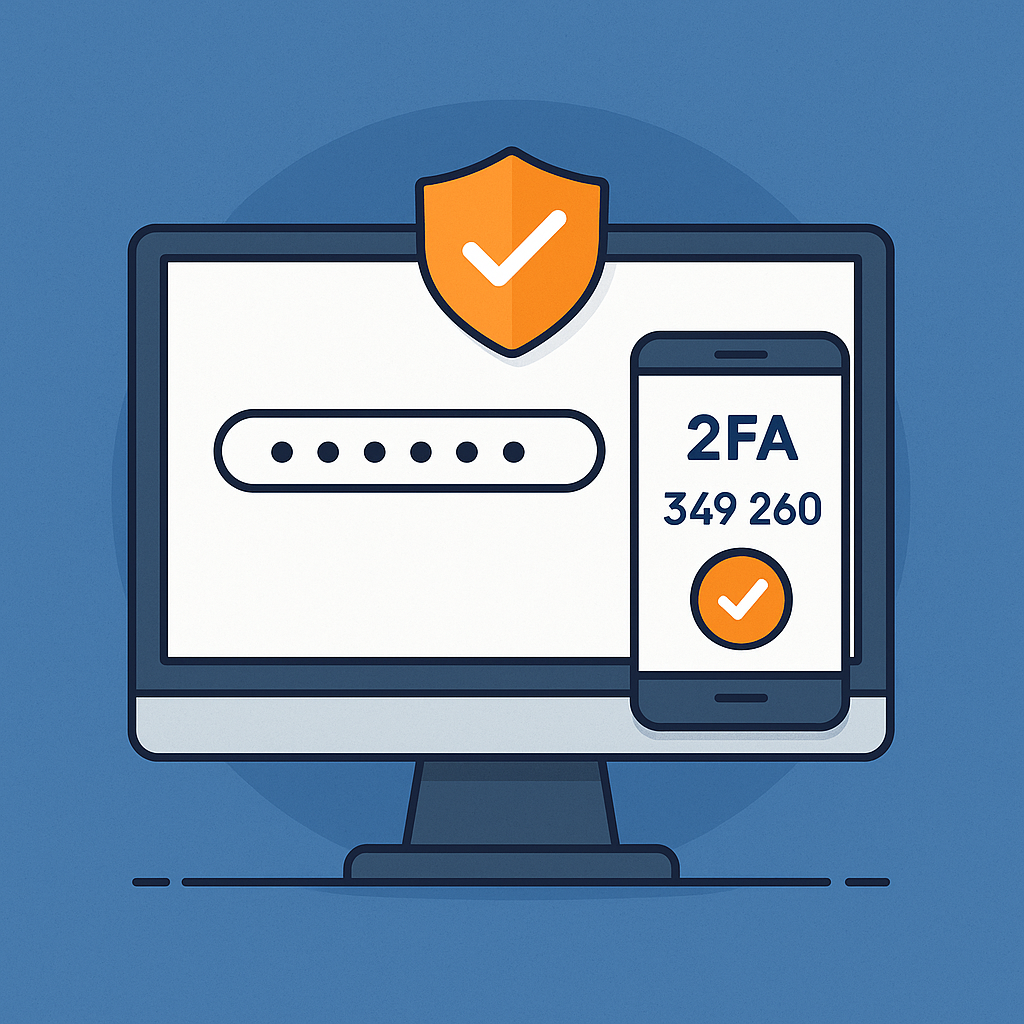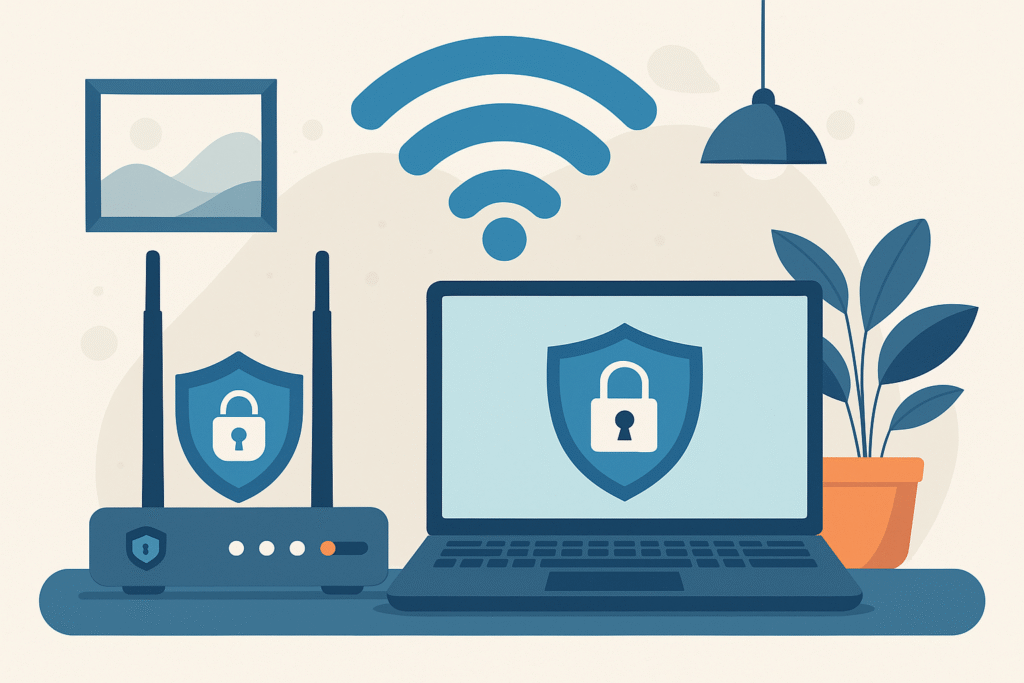In the modern digital age, cybersecurity is no longer just an IT department concern — it’s a personal responsibility for every individual who connects to the internet.
Whether you’re a business owner managing customer data, a student researching online, a remote employee attending Zoom meetings, or even just someone shopping or banking through your phone, you are a potential target for cybercriminals.
And the threats? They’ve evolved. Fast.
In 2025, we’re facing more sophisticated cyberattacks than ever before:
- AI-generated phishing emails are almost indistinguishable from real ones.
- Ransomware now targets cloud-based systems, IoT devices, and even smart homes.
- Data breaches are happening faster and affecting more people than in previous years.
- Password leaks, phishing links, social engineering, and public Wi-Fi snooping are all on the rise — and many users don’t even realize how vulnerable they are until it’s too late.
According to the 2025 Cybersecurity Threat Report by IBM, the average cost of a data breach globally now exceeds $5 million, with 82% of breaches involving human error or weak security habits.
But here’s the good news: most cyberattacks are completely preventable.
All it takes is adopting the right digital habits — and that’s where this post comes in.
We’ve compiled the top 10 cybersecurity best practices that everyone — from tech newbies to seasoned professionals — should follow. Each one is practical, actionable, and updated for today’s threats, helping you stay secure without needing a computer science degree.
💡 Whether you’re managing a business website, protecting your family’s data, or simply want to browse safely — these tips will help you stay one step ahead of hackers.
Let’s dive into the most critical habits that can safeguard your data, your devices, and your peace of mind.
“We don’t need to mention using an Antivirus, as you probably know how important it is.”
🔐 1. Use Strong, Unique Passwords:
Passwords are your first line of defense against cybercriminals. Weak, easy-to-guess passwords are the #1 reason for account breaches.
❌ Weak Password Example:
- 123456
- password
- john2020
- qwerty
These are predictable, often found in password dictionaries, and can be cracked in seconds using brute-force attacks.
✅ Strong Password Example:
- tR!9#kPq2&vR@7xZ
- C0ffee&M0n@rch$241!
- Or even better: use a randomly generated password from a password manager.
💡 Why They Work:
- Length (12+ characters)
- Complexity (mix of upper/lowercase, numbers, symbols)
- Unpredictability
🔑 Pro Tip: Never reuse passwords across platforms. Use a tool like Bitwarden, 1Password, or LastPass to generate and store them securely.
Read more about how to create your password

🧠 2. Be Phishing-Aware:
Phishing is a cyberattack that tricks you into revealing personal info (like passwords or credit card details) by pretending to be a trusted source.
🐟 What Does Phishing Look Like?
- An email that says, “Your PayPal account has been suspended. Click here to verify.”
- A fake website that looks like your bank’s login page.
- A WhatsApp message claiming you’ve won a prize — just send your address.
🎯 How to Protect Yourself:
- Never click suspicious links.
- Check email addresses carefully.
- Verify directly — If a company emails you, call their verified number.
🧠 Think like a hacker — if something feels off, it probably is.
Learn more about fishing here.
🧭 3. Keep Software & Devices Updated:
Outdated software is like leaving your front door open. Most updates contain security patches that close vulnerabilities.
🔧 What Needs Updating?
- Operating Systems (Windows, macOS, Android, iOS)
- Browsers (Chrome, Firefox, Safari)
- Apps, Plugins, WordPress Themes
- Antivirus & Firewalls
⏰ Pro Tip: Enable automatic updates whenever possible to reduce risk.
🧲 4. Enable Two-Factor Authentication (2FA):
2FA adds an extra layer of security by requiring something you know (password) and something you have (like your phone).
🛡️ Real-World Example:
- You enter your Gmail password, then receive a code on your phone to confirm it’s really you.
Even if hackers steal your password, they can’t access your account without that second factor.
🔐 Best 2FA Tools:
- Google Authenticator
- Authy
- Duo Security
- Yubico (hardware key)
Use it for: email, banking, social media, and any site that supports it.
learn more about 2FA

☠️ 5. Understand & Defend Against Ransomware:
💥 What is Ransomware?
Ransomware is a type of malware that encrypts your files and demands payment (usually in Bitcoin) to unlock them.
🧨 How It Happens:
- Clicking on a malicious email link.
- Downloading infected files or software.
- Visiting compromised websites.
🧯 How to Protect Against It:
- Keep backups (see #6).
- Use strong antivirus/firewall tools.
- Never download software from untrusted sources.
- Educate employees — especially in businesses.
🚨 In 2025, ransomware attacks are more targeted than ever. Healthcare, schools, and small businesses are prime targets.
Learn more about Ransomware in this article
💾 6. Back Up Your Data Regularly:
Imagine losing all your documents, photos, or customer records in a blink. Without backups, you’re one click away from catastrophe.
🔄 Types of Backups:
- Cloud Backup (e.g., Google Drive, Dropbox, Backblaze)
- External Drives (SSD, USB)
- Automated WordPress Backups (UpdraftPlus, Jetpack)
📆 How Often?
- Weekly for personal use
- Daily or real-time for business websites
🔁 Always follow the 3-2-1 rule:
- 3 copies of your data
- 2 different storage types
- 1 offsite backup
🌐 7. Secure Your Wi-Fi & Home Network:
Your Wi-Fi is a digital doorway. If it’s insecure, hackers can snoop on your data or hijack devices.
🔒 Best Practices:
- Use WPA3 encryption (or at least WPA2).
- Change the default admin username/password of your router.
- Use a strong, unique Wi-Fi password.
- Disable remote access unless you really need it.
- Keep router firmware updated.
🏠 Bonus Tip: Set up a guest network for visitors — keep your devices and IoT gadgets isolated.

📱 8. Limit App Permissions:
Apps often ask for access they don’t need: location, microphone, camera, contacts — why would a flashlight app need all that?
🔍 Why It Matters:
Excess permissions open the door to:
- Data leaks
- Location tracking
- Eavesdropping
✅ What You Can Do:
- Regularly audit app permissions.
- Use Android/iOS privacy dashboards.
- Revoke unnecessary access (e.g., disable microphone for Facebook).
📲 When in doubt, deny first, grant later if needed.
💬 9. Use Secure Messaging & Browsers:
What you say online can be intercepted. Use encrypted tools to keep your communications and browsing safe.
🔐 Encrypted Messaging Apps:
- Signal
- Telegram (secret chat)
- WhatsApp (uses Signal protocol)
🕵️ Secure Browsers:
- Brave
- Firefox
- Tor Browser (for anonymity)
🧩 Bonus Tip: Use browser extensions like:
- uBlock Origin (ad/tracker blocker)
- HTTPS Everywhere (forces encrypted sites)
Learn more about VPN here.
🧑💻 10. Stay Educated & Aware
Cybersecurity isn’t a “set it and forget it” task — it’s an ongoing mindset.
📚 Stay Informed By:
- Following blogs like Adam Tech Guide, Krebs on Security, or The Hacker News
- Subscribing to newsletters (e.g., SANS Internet Storm Center)
- Taking free courses (e.g., Google Cybersecurity, Coursera, Udemy)
🧠 Why It Matters:
Hackers evolve daily. So should you.
Knowledge is the best armor against social engineering, zero-day threats, and evolving malware.

🛑 Final Thoughts: Stay One Step Ahead:
You don’t need to be a cybersecurity expert — just take these 10 practical steps seriously.
From building better passwords to avoiding phishing scams and understanding ransomware, every bit of awareness helps.
✅ Summary Checklist:
- ✅ Use strong, unique passwords
- ✅ Enable 2FA on all major accounts
- ✅ Watch out for phishing
- ✅ Keep all software up to date
- ✅ Learn about and prepare for ransomware
- ✅ Back up your data regularly
- ✅ Secure your Wi-Fi
- ✅ Manage app permissions
- ✅ Use secure browsers/messaging
✅ Keep learning — stay informed
🧩 Bonus Tip: Use Secure Hosting (If You Run a Website):
A secure host is your first wall of defense. Look for:
Daily backups
Malware scanning
Firewall & DDoS protection
🔗 See our full Bluehost vs. Cloudways comparison to choose a secure host that fits your needs.


